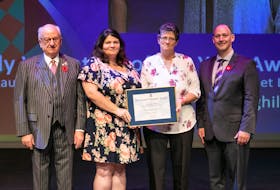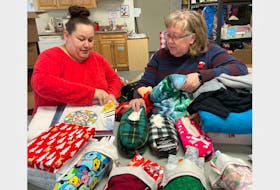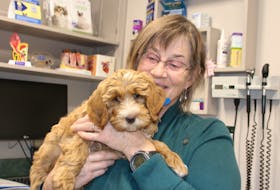Much like the First World War brought new words such as 'U-boat', 'home front' and 'rationing', COVID-19 has also broadened the everyday person’s vernacular.
“Social change almost always precipitates linguistic change,” explained Dalhousie University English professor Brian Gillis.
“Not to romanticize things too much about COVID, but there’s a certain poetry in the idea that language acts like a living thing, and can also be affected — just like our bodies and our families can — by infection and disease."

Terms we didn't use a year ago - like "self-isolation" or "shelter in place" - have infiltrated our lives. While the words were coined "decades or centuries ago," he says, they're now being used more and more.
Indeed, 2020 has likely expanded our collective vocabulary more than any other year in recent memory, both with new words or repurposed phrases.
Not meant to be an exhaustive list, there are medical terms such as quarantine, COVID-19, coronavirus, contact tracing, self-isolate, flatten the curve, mask, PPE (personal protective equipment), vaccine, ventilator, superspreader, N95 and non-medical mask.
There are words related to a change in workplace structures, with many organizations moving to a work-from-home model: remote, e-learning, WFH (work from home), unmute and Zoom fatigue.
And there are words that describe COVID-19’s effect on our lives: pandemic, unprecedented, lockdown, doomscrolling, new normal, in-person, social distancing, physical distancing, bubble, frontline, essential worker, circuit breaker, CERB, six feet apart, elbow bump and infodemic.
Words of the year
Many dictionaries’ word of the year for 2020 was pandemic-related. Both Dictionary.com and Merriam-Webster chose “pandemic” while the Cambridge Dictionary selected “quarantine.”
But because 2020 was so “unprecedented” - a word likely ranking high on any “Overused Words of the Year” list - the Oxford English Dictionary couldn’t pick just one.
“The English language, like all of us, has had to adapt rapidly and repeatedly this year. Given the phenomenal breadth of language change and development during 2020, Oxford Languages concluded that this is a year which cannot be neatly accommodated in one single word,” reads an excerpt from the dictionary’s “2020: Words of an unprecedented year” document.
Not all of Oxford’s words dealt with the pandemic, but the majority did. They chose coronavirus, COVID-19, social distancing, reopening and superspreader, among many others.

Like many lexicographers, linguists and others have noted, times of significant social change often spur changes to the English language, but Oxford says what’s exceptional about 2020 was “the hyper-speed at which the English-speaking world amassed a new collective vocabulary relating to the coronavirus, and how quickly it became, in many instances, a core part of the language.”
Oxford notes that the general public adopted specialized medical terminology into everyday speech rather quickly.
“Language both reflects and creates society. It is therefore an index of whatever is significant to the community who speaks it,” said Memorial University linguistics professor Paul De Decker.
De Decker said linguists are already beginning to study the pandemic’s effect on language, pointing to commentary in the South African Journal of Science about how people are talking about the pandemic in different languages.
Finding common ground

Gillis said these changes to language reflect our humanity.
“The idea that a collective lexicon or vernacular would grow out of what is a hugely dramatic and traumatic event is, I think, a very human thing,” he said.
“I hope it tells us that we’re all still working together, and still trying to find a common ground and a common vocabulary in terms of figuring out how to proceed, and how to keep each other safe. …As language is a living thing, it makes sense that it would evolve and change in the face of quite a lot of challenges.”
For folklorist and linguist Philip Hiscock, a retired Memorial University professor, the term that stands out to him most this year — and which speaks to the human element of where the disease and language intersect — is “COVID hair.”
Hiscock said “COVID hair” is a humorous performance by those who used the term to describe the effect of pandemic business closures on their appearance — in this case, grown-out locks, perhaps with more split ends or grey than usual.
“It is what is sometimes called an ‘intimatiser’ — a technique for actually using something with a fun component to draw people somewhat more together,” he said.
“There is indeed a lot to be worked out about what the terms and their use tell us about modern society...but how we relate to one another in those warm and simple connections of making jokes and compliments about each other's masks or hair is an important thread.”









